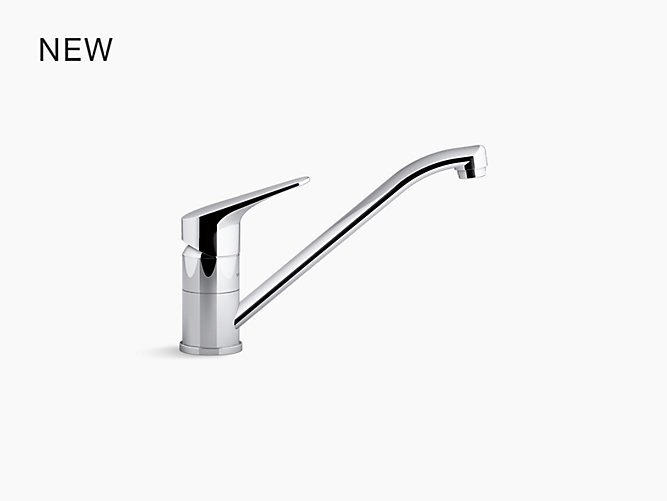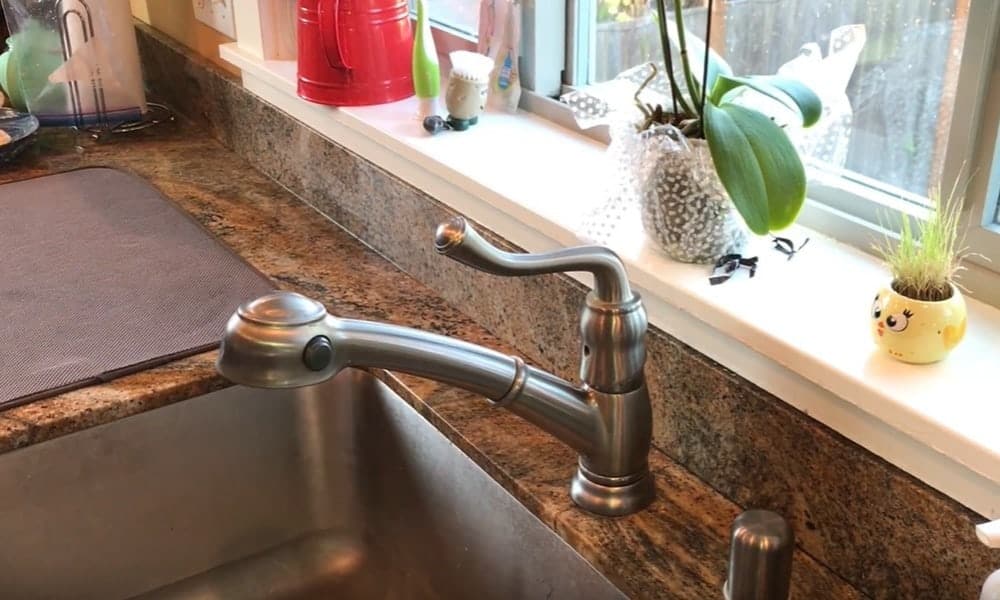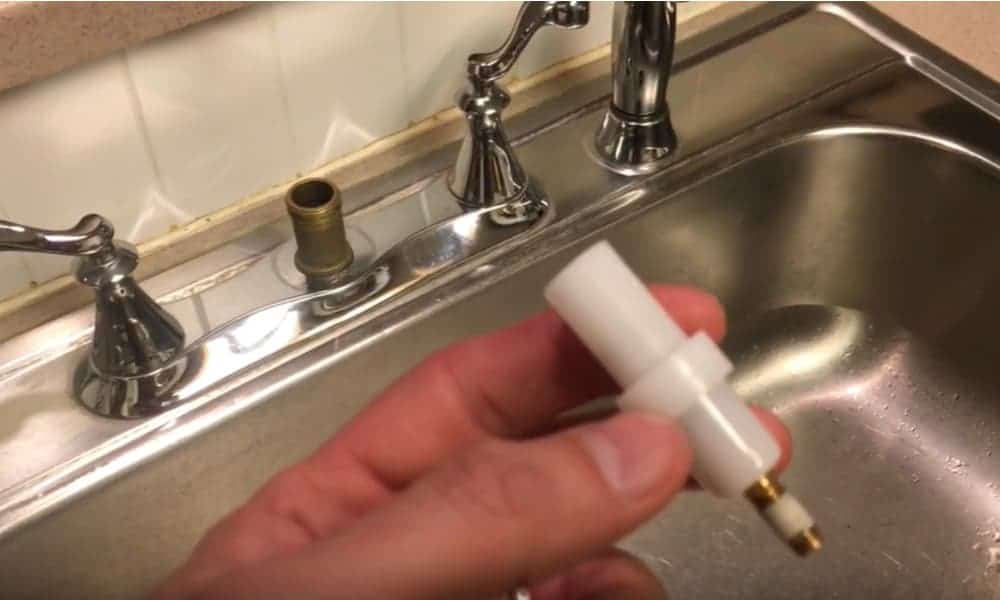Removing a kitchen faucet may seem like a daunting task, but with the right tools and knowledge, it can be a simple DIY project. Whether you are upgrading your kitchen or just need to replace a faulty faucet, learning how to remove it properly is crucial. Follow these steps to safely remove your kitchen faucet and get ready for your next home improvement project.1. How to Remove a Kitchen Faucet
Before you begin, make sure to turn off the water supply to your kitchen faucet. Once the water is shut off, follow these steps: Step 1: Remove any objects or items from under your sink to give yourself enough room to work. Step 2: Locate the supply lines and disconnect them from the faucet. This can usually be done by hand, but you may need pliers or an adjustable wrench if they are too tight. Step 3: Using a basin wrench, loosen and remove the nuts that secure the faucet to the sink. Step 4: Carefully lift the faucet off the sink and set it aside. Step 5: Clean the area where the faucet was attached to the sink to prepare for the installation of the new faucet.2. Step-by-Step Guide for Removing a Kitchen Faucet
Many homeowners prefer to tackle DIY projects to save money and have a sense of accomplishment. Removing a kitchen sink faucet is no exception. With the right tools and a little bit of knowledge, you can successfully remove your old faucet and install a new one yourself. Just be sure to take your time and follow the steps carefully to avoid any mistakes.3. DIY: Removing a Kitchen Sink Faucet
To remove a kitchen faucet, you will need the following tools: Basin wrench, adjustable wrench, pliers, screwdriver, and a rag or towel to clean up any water spills. Having these tools on hand will make the process much smoother and easier. If you don't already have these tools, consider investing in them for future home improvement projects.4. Tools Needed for Removing a Kitchen Faucet
To make your faucet removal process even easier, here are a few tips: Tip #1: Take pictures of the faucet installation before you remove it. This will serve as a reference when installing the new faucet. Tip #2: Have someone hold the faucet from above while you work underneath. This will prevent any accidental damage to the sink or faucet. Tip #3: Use a penetrating oil if you encounter stubborn nuts or bolts. This will help loosen them and make the removal process smoother.5. Tips for Removing a Kitchen Faucet with Ease
While removing a kitchen faucet may seem like a straightforward task, there are some common mistakes that homeowners make. These mistakes can lead to frustration and even damage to your sink or faucet. Here are a few things to avoid when removing a kitchen faucet: Mistake #1: Not turning off the water supply before starting the removal process. Mistake #2: Forgetting to disconnect the supply lines before trying to remove the faucet. Mistake #3: Using the wrong tools or not having the necessary tools on hand.6. Common Mistakes to Avoid When Removing a Kitchen Faucet
If you prefer visual instructions, there are plenty of video tutorials available online that can guide you through the process of removing a kitchen faucet. Watching a step-by-step video can make the process even easier and give you a better understanding of what needs to be done.7. Video Tutorial: Removing a Kitchen Faucet in 5 Easy Steps
If you encounter a kitchen faucet that seems stuck and won't budge, don't panic. There are a few things you can try to loosen it and make removal easier: Method #1: Use a penetrating oil to loosen the stuck nuts or bolts. Method #2: Apply heat to the stuck area using a hairdryer or heat gun. This will help loosen the nuts or bolts. Method #3: Use a strap wrench to grip and turn the stuck parts.8. How to Remove a Stuck Kitchen Faucet
While removing a kitchen faucet is a relatively simple task, there may be some unexpected problems that arise. If you encounter any issues, such as a broken or corroded faucet, it may be best to call a professional plumber to handle the removal. This will ensure that the job is done correctly and prevent any further damage.9. Removing a Kitchen Faucet: What to Do if You Encounter Problems
Deciding whether to hire a professional plumber or tackle the removal yourself ultimately depends on your skill level and comfort with DIY projects. If you have experience with plumbing and feel confident in your abilities, then DIY may be the best option for you. However, if you are unsure or have encountered any problems, it may be worth investing in a professional plumber to ensure a smooth and successful removal process. Removing a kitchen faucet may seem like a daunting task, but with the right tools and knowledge, it can be a simple and rewarding DIY project. Just be sure to take your time, follow the steps carefully, and don't hesitate to call a professional if needed. With a little bit of effort, you can successfully remove your old faucet and prepare for the installation of a shiny new one.10. Professional vs. DIY: Is it Worth Hiring a Plumber to Remove a Kitchen Faucet?
Why Remove a Faucet from Your Kitchen Sink?
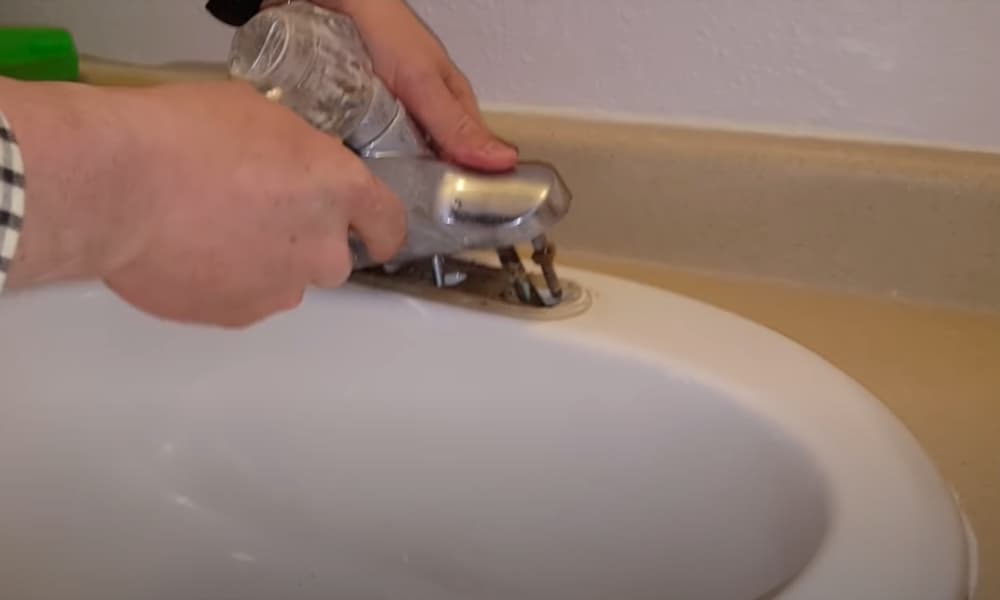
Proper Faucet Maintenance
 Proper maintenance of your kitchen faucet is crucial to ensure its longevity and functionality. Over time, faucets can wear out and develop leaks, making it necessary to remove and replace them. This can also be a great opportunity to upgrade to a more modern and efficient faucet.
Proper maintenance of your kitchen faucet is crucial to ensure its longevity and functionality. Over time, faucets can wear out and develop leaks, making it necessary to remove and replace them. This can also be a great opportunity to upgrade to a more modern and efficient faucet.
Removal Process
 Removing a faucet from your kitchen sink may seem like a daunting task, but with the right tools and knowledge, it can be a straightforward process. Begin by turning off the water supply to the faucet. This can typically be done by turning off the water valves located under the sink. Next, use a wrench to loosen and remove the nuts holding the faucet in place. Once the nuts are removed, you can gently lift the faucet off the sink.
Removing a faucet from your kitchen sink may seem like a daunting task, but with the right tools and knowledge, it can be a straightforward process. Begin by turning off the water supply to the faucet. This can typically be done by turning off the water valves located under the sink. Next, use a wrench to loosen and remove the nuts holding the faucet in place. Once the nuts are removed, you can gently lift the faucet off the sink.
Replacing the Faucet
 After removing the old faucet, it's time to replace it with a new one. Before installing the new faucet, make sure to thoroughly clean the area where the old one was removed. This will ensure a secure and leak-free installation. Follow the manufacturer's instructions to properly install the new faucet, and make sure to tighten all the nuts and connections securely.
After removing the old faucet, it's time to replace it with a new one. Before installing the new faucet, make sure to thoroughly clean the area where the old one was removed. This will ensure a secure and leak-free installation. Follow the manufacturer's instructions to properly install the new faucet, and make sure to tighten all the nuts and connections securely.
Updating Your Kitchen's Design
 Removing an old faucet and replacing it with a new one can also be a great way to update the design of your kitchen. With so many styles and finishes to choose from, you can easily find a faucet that fits your kitchen's aesthetic. Additionally, upgrading to a more efficient faucet can also help save water and reduce your utility bills.
In conclusion, removing a faucet from your kitchen sink is an essential task in maintaining your kitchen's functionality and design. By following the proper removal and installation process, you can ensure a successful and efficient faucet replacement. So don't hesitate to remove and upgrade your kitchen faucet for a better and more enjoyable cooking experience.
Removing an old faucet and replacing it with a new one can also be a great way to update the design of your kitchen. With so many styles and finishes to choose from, you can easily find a faucet that fits your kitchen's aesthetic. Additionally, upgrading to a more efficient faucet can also help save water and reduce your utility bills.
In conclusion, removing a faucet from your kitchen sink is an essential task in maintaining your kitchen's functionality and design. By following the proper removal and installation process, you can ensure a successful and efficient faucet replacement. So don't hesitate to remove and upgrade your kitchen faucet for a better and more enjoyable cooking experience.












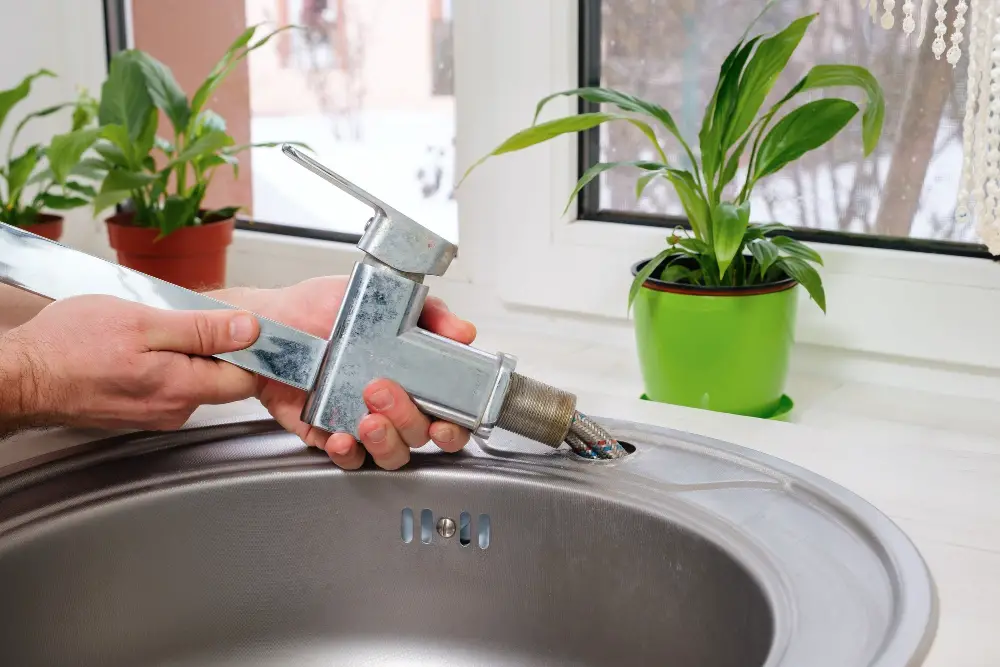
/cdn.vox-cdn.com/uploads/chorus_image/image/69616954/Narragansett_01232021NR_39.0.jpg)








